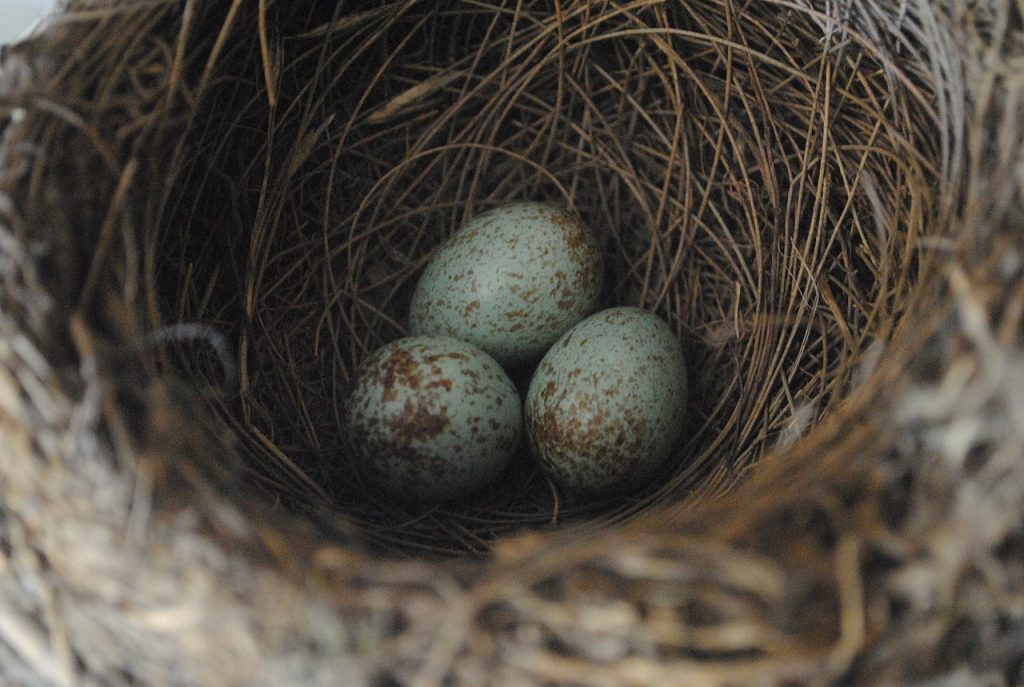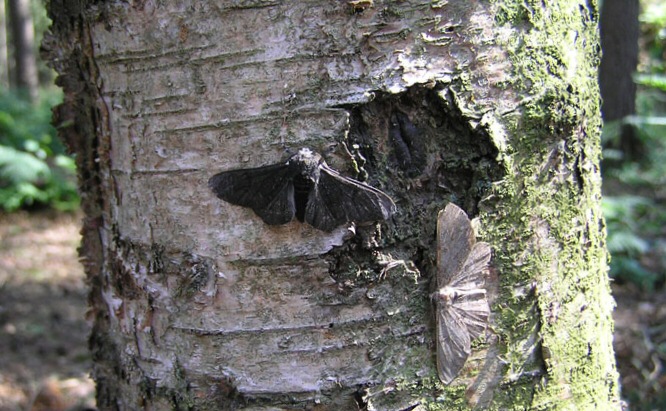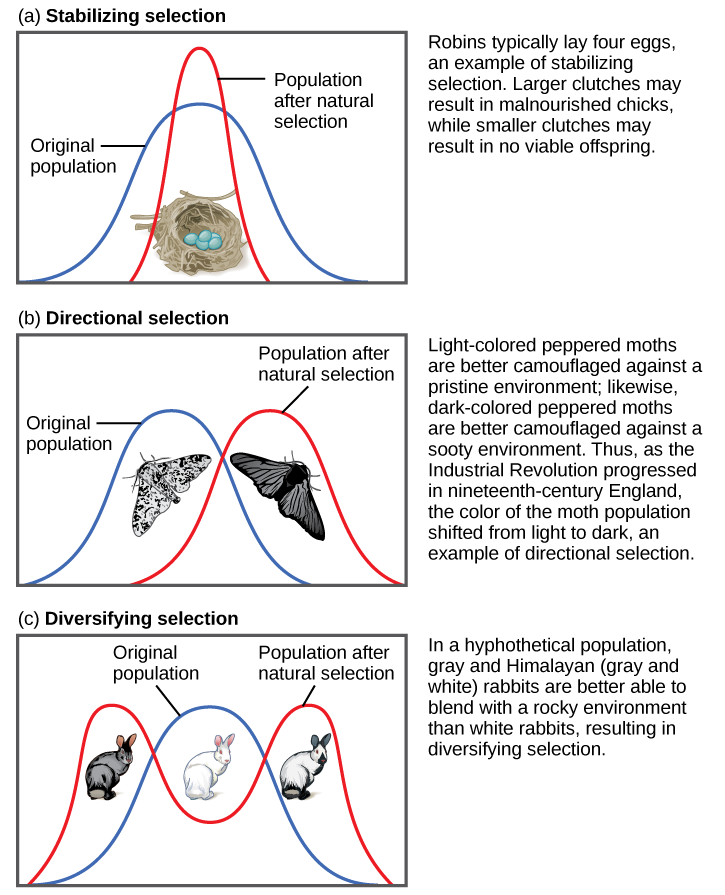3.3 Adaptive Evolution
Natural selection acts on the population’s heritable traits: selecting for beneficial alleles that allow for environmental adaptation, and thus increasing their frequency in the population, while selecting against deleterious alleles and thereby decreasing their frequency. Scientists call this process adaptive evolution.
Natural selection acts on entire organisms, not on an individual allele within the organism. An individual may carry a very beneficial genotype with a resulting phenotype that, for example, increases the ability to reproduce (fecundity), but if that same individual also carries an allele that results in a fatal childhood disease, that fecundity phenotype will not pass to the next generation because the individual will not live to reach reproductive age. Natural selection acts at the individual’s level. Individuals that leave relatively more offspring are considered more “fit”. Scientists call this an organism’s evolutionary fitness.
There are several ways selection can affect population variation: stabilizing selection, directional selection, diversifying selection, frequency-dependent selection, and sexual selection. As natural selection influences the allele frequencies in a population, individuals can either become more or less genetically similar and the phenotypes can become more similar or more disparate.
Stabilizing Selection
If natural selection favors an average phenotype, selecting against extreme variation, the population will undergo stabilizing selection. In a mouse population that lives in the woods, for example, natural selection is likely to favor mice that best blend in with the forest floor and are less likely for predators to spot. Assuming the ground is a fairly consistent shade of brown, those mice whose fur is most closely matched to that color will be most likely to survive and reproduce, passing on their genes for their brown coat. Mice that carry alleles that make them a bit lighter or a bit darker will stand out against the ground and be more likely to fall victim to predation. As a result of this selection, the population’s genetic variance will decrease.

Directional Selection
When the environment changes, populations will often undergo directional selection, which selects for phenotypes at one end of the spectrum of existing variation. A classic example of this type of selection is the evolution of the peppered moth in eighteenth- and nineteenth-century England. Prior to the Industrial Revolution, the moths were predominately light in color, which allowed them to blend in with the light-colored trees and lichens in their environment. However, as soot began spewing from factories, the trees darkened, and the light-colored moths became easier for predatory birds to spot. Over time, the frequency of the moth’s melanic form increased because they had a higher survival rate in habitats affected by air pollution because their darker coloration blended with the sooty trees. Similarly, the hypothetical mouse population may evolve to take on a different coloration if something were to cause the forest floor where they live to change color. The result of this type of selection is a shift in the population’s genetic variance toward the new, fit phenotype.

Diversifying Selection
Sometimes two or more distinct phenotypes can each have their advantages for natural selection, while the intermediate phenotypes are, on average, less fit. Scientists call this diversifying selection. We see this in many animal populations that have multiple male forms. Large, dominant alpha males use brute force to obtain mates, while small males can sneak in for furtive copulations with the females in an alpha male’s territory. In this case, both the alpha males and the “sneaking” males will be selected for, but medium-sized males, who can’t overtake the alpha males and are too big to sneak copulations, are selected against. Diversifying selection can also occur when environmental changes favor individuals on either end of the phenotypic spectrum. Imagine a mouse population living at the beach where there is light-colored sand interspersed with patches of tall grass. In this scenario, light-colored mice that blend in with the sand would be favored, as well as dark-colored mice that can hide in the grass. Medium-colored mice, alternatively would not blend in with either the grass or the sand, and thus predators would most likely eat them. The result of this type of selection is increased genetic variance as the population becomes more diverse.

No Perfect Organisms
Natural selection is a driving force in evolution and can generate populations that are better adapted to survive and successfully reproduce in their environments. However, natural selection cannot produce the perfect organism. Natural selection can only select on existing variation in the population. It does not create anything from scratch. Thus, it is limited by a population’s existing genetic variance and whatever new alleles arise through mutation.
ability of an organism to produce offspring, as compared to other individuals of the population
selection that favors average phenotypes
selection that favors phenotypes at one end of the spectrum of existing variation
selection that favors two or more distinct phenotypes

